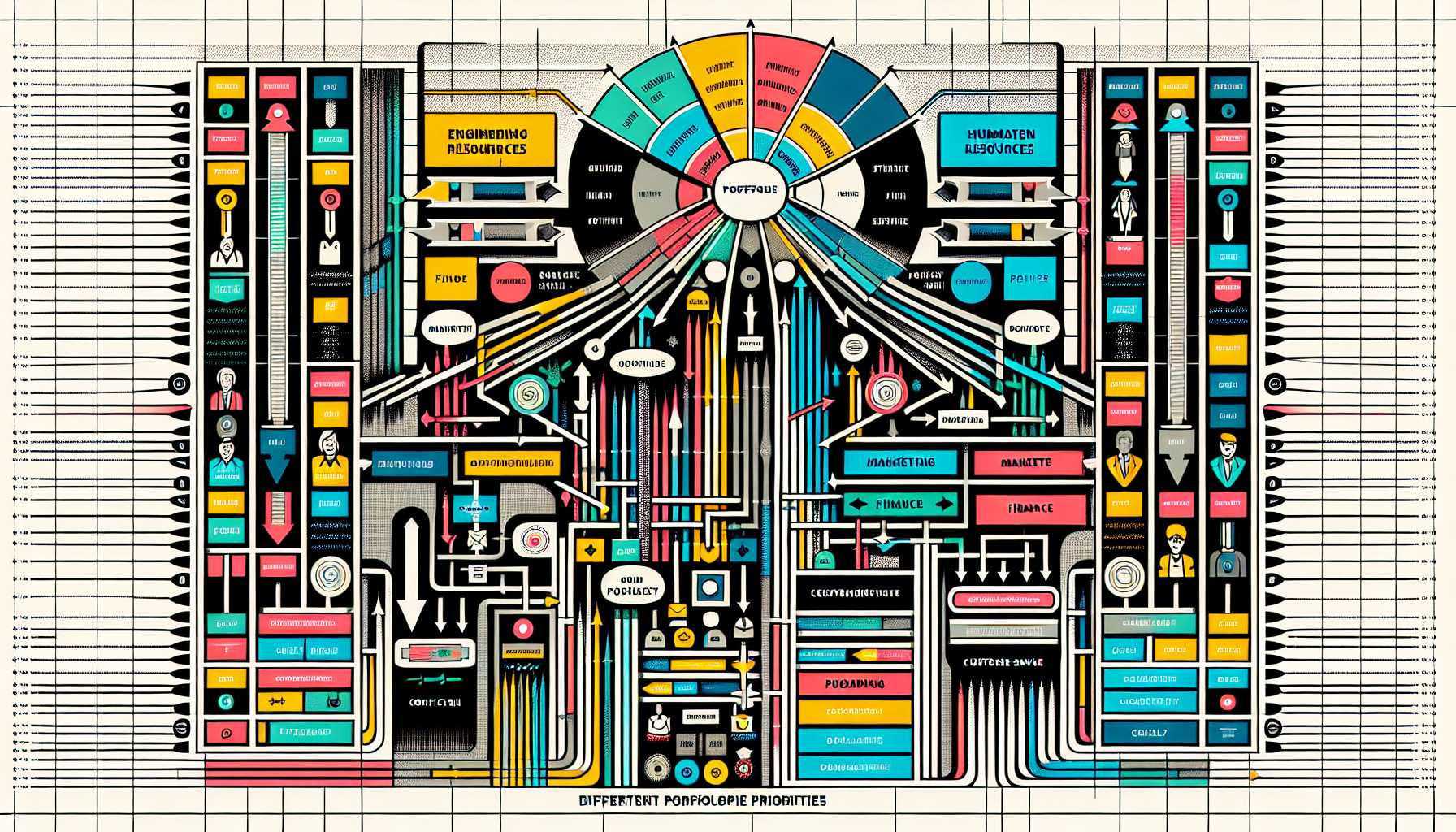As product managers, we face the Herculean task of not just crafting compelling product visions but also steering that vision through the choppy waters of organizational complexities. One significant challenge is resolving conflicting priorities between departments. Through trial, error, and experience, I’ve gathered insights and approaches that could help you navigate these conflicts with finesse.
The Conflict Conundrum: Understanding the Root Cause
Conflicting priorities often arise from differing departmental goals and KPIs. Sales might be pushing for features that help close immediate deals, while Engineering might be focused on tech debt and scalability. Understanding the core objectives and pressures of each department is the first step in resolving these conflicts.
Personal Anecdote: The Sales vs. Engineering Standoff
One of my most significant challenges occurred when Sales and Engineering were at stark odds over product direction. The Sales team was advocating for new features to meet current market demands, while Engineering was concerned about the long-term technical integrity of the product.
Through the process, I learned that empathy is a powerful tool. By putting myself in the shoes of each department head, I could understand their motivations and convey a balanced perspective to each side.
Finding Common Ground: Frameworks to the Rescue
When resolving interdepartmental conflicts, it’s essential to have a structured approach:
Prioritization Matrices
Making use of prioritization matrices can help take some of the emotions out of the debate. For example, the Weighted Scoring Model allows you to assign scores to different criteria, such as customer impact, revenue potential, or strategic fit. This creates a visual representation of how each request stacks up against the others.
Cross-Functional Alignment Workshops
Facilitate workshops where representatives from conflicting departments can come together to understand the trade-offs of each decision. Techniques like the ‘Buy a Feature’ game can make this process engaging, allowing participants to ‘spend’ a limited budget on their most desired features.
Horizon Planning
Talk in terms of timelines. Use the three-horizon framework to categorize features and initiatives into short, medium, and long-term horizons. This can help balance immediate needs with strategic priorities and make planning more palatable for all departments.
The Art of Diplomacy: Personal Strategies That Worked
My own successes in resolving interdepartmental conflicts often had less to do with the frameworks and more with the soft skills applied. These included:
- Active Listening: Hearing out each department’s concerns in their entirety without jumping to conclusions.
- Diplomatic Communication: Expressing the value of each department’s input while guiding the conversation toward a unified solution.
- Consensus Building: Facilitating discussions that led to a shared understanding and buy-in. This often meant finding creative ‘win-win’ compromises.
An instance that comes to mind was navigating a conflict between Marketing and Product Development. Marketing demanded features for a campaign that could have resulted in a sub-par user experience. Rather than outright dismissal or acceptance, we took a phased approach—rolling out basic functionality in time for the campaign and incrementally releasing improvements that satisfied both parties.
The Road to Resolution
Conflicts between departments are inevitable, but they can be managed and even turned into productive dialogue. Highlighting the shared vision and goals can sometimes be all it takes to bring everyone onto the same page.
Ultimately, resolving conflicting priorities between departments requires a combination of soft skills and strategic frameworks, an understanding of each department’s perspective, and a focus on the overall success of the product and company.
By implementing structured negotiation and prioritization techniques, leading empathetically, and occasionally mediating to find the best outcome for the product, I’ve found you can not only resolve the present conflicts but also build a stronger, more collaborative culture for the future.

